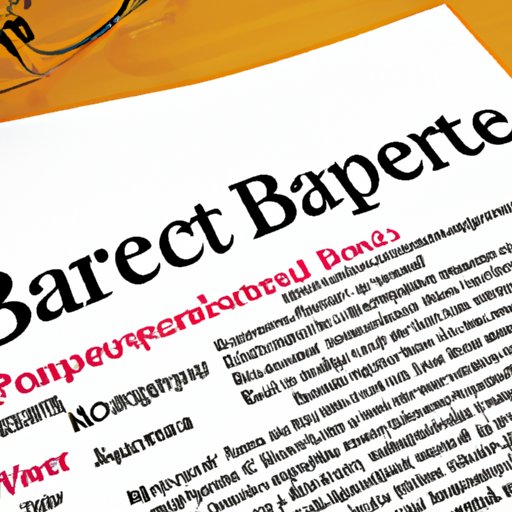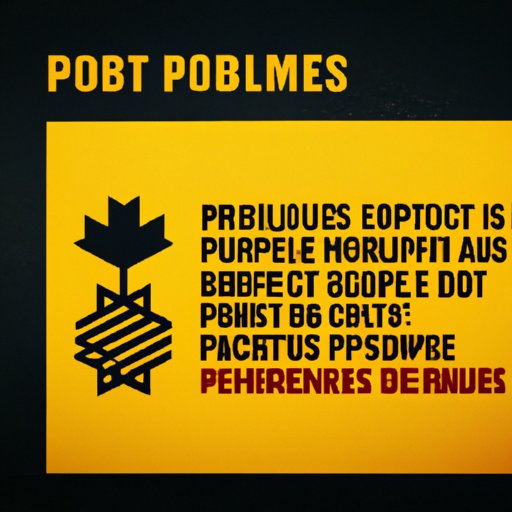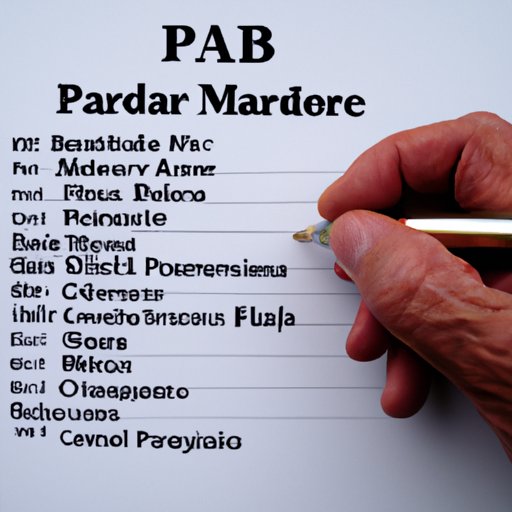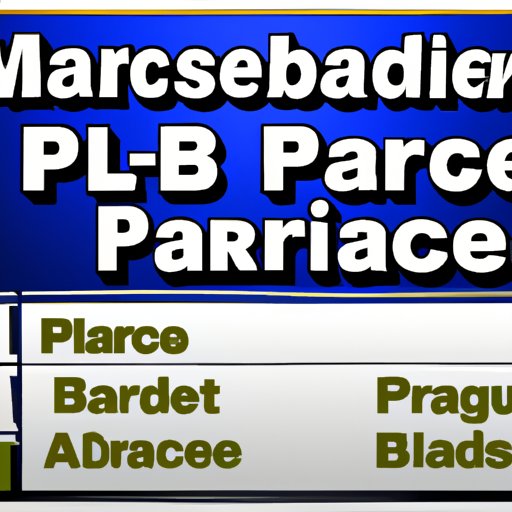Introduction
Medicare Part B is a federal health insurance program that helps cover medical costs for people over 65 years old or those with certain disabilities. It is one of four parts of Medicare and provides coverage for doctor visits, outpatient care, durable medical equipment, and other services not covered by Medicare Part A. In this article, we will explore the basics of Medicare Part B, including eligibility requirements, coverage benefits, cost, and payment options.
Explaining the Basics of Medicare Part B
What is Medicare Part B and how does it work? Medicare Part B is a government-funded health insurance program that helps cover medical costs for people over 65 years old or those with certain disabilities. It covers services such as doctor visits, outpatient care, durable medical equipment, and other services not covered by Medicare Part A. It also helps cover some preventative care services, such as flu shots and screenings, to help seniors stay healthy.
Who is eligible for Medicare Part B? To be eligible for Medicare Part B, you must be 65 years old or older, or have certain disabilities. You must also be a U.S. citizen or permanent resident, and live in the United States.
How to Enroll in Medicare Part B
When can you enroll in Medicare Part B? You can enroll in Medicare Part B during your Initial Enrollment Period (IEP), which begins three months before your 65th birthday and ends three months after your 65th birthday. If you miss this period, you may still be able to enroll during the General Enrollment Period, which runs from January 1st to March 31st each year.
How to enroll in Medicare Part B? Enrolling in Medicare Part B is relatively simple. You can apply online or call your local Social Security office to get started. You will need to provide documents such as your birth certificate, Social Security number, and proof of residence. Once you are approved, you will receive your Medicare card in the mail.

Benefits and Coverage of Medicare Part B
What services are covered by Medicare Part B? Medicare Part B covers a wide range of medical services, including doctor visits, outpatient care, durable medical equipment, and preventive care services like flu shots and screenings. It also helps cover some home health services, such as physical therapy, occupational therapy, and speech therapy.
What medical expenses are not covered by Medicare Part B? Medicare Part B does not cover long-term care, dental care, vision care, hearing aids, or cosmetic surgery. It also does not cover most prescription drugs.
How much does Medicare Part B cost? The cost of Medicare Part B depends on your income and other factors. Generally, most people pay a monthly premium of $148.50. In addition, there is a deductible of $198 per year, and you may also be responsible for coinsurance and copayments for certain services.

Cost and Payment Options for Medicare Part B
What is the cost of Medicare Part B? As mentioned above, the cost of Medicare Part B depends on your income and other factors. Most people pay a monthly premium of $148.50, plus a deductible of $198 per year. You may also be responsible for coinsurance and copayments for certain services.
What payment options are available for Medicare Part B? You can pay your Medicare Part B premiums electronically through your bank or credit union, or by mail using a check or money order. Some states also offer additional payment options, such as automatic deductions from your Social Security benefits.
Understanding Medicare Part B Eligibility Requirements
What are the eligibility requirements for Medicare Part B? To be eligible for Medicare Part B, you must be 65 years old or older, or have certain disabilities. You must also be a U.S. citizen or permanent resident, and live in the United States. You will also need to provide documents such as your birth certificate, Social Security number, and proof of residence.
What documents do I need to apply for Medicare Part B? To apply for Medicare Part B, you will need to provide documents such as your birth certificate, Social Security number, and proof of residence. You may also need to provide additional documents, such as a copy of your driver’s license or passport.

Exploring the Different Parts of Medicare Part B
What are the different parts of Medicare Part B? Medicare Part B is made up of four parts: Part A (hospital insurance), Part B (medical insurance), Part C (Medicare Advantage plans), and Part D (prescription drug coverage). Each part covers different services and has different eligibility requirements.
What are the differences between each part of Medicare Part B? Part A covers hospital stays, while Part B covers doctor visits, outpatient care, and some preventive care services. Part C is a type of private health plan offered by Medicare-approved insurance companies, while Part D covers prescription drugs. Each part has different eligibility requirements and cost structures.

What Seniors Should Know About Medicare Part B
What advice do seniors have when considering Medicare Part B? Seniors should research their options carefully before deciding on a Medicare Part B plan. They should compare plans and understand the coverage benefits, deductibles, and copayments associated with each plan. They should also consider any additional services they may need, such as vision or dental care, that are not covered by Medicare Part B.
What resources are available to help seniors understand Medicare Part B? There are a variety of online resources available to help seniors understand Medicare Part B, such as the official Medicare website, Medicare.gov. Additionally, your local Area Agency on Aging can provide personalized assistance with understanding Medicare Part B and choosing the best plan for you.
Conclusion
In conclusion, Medicare Part B is an important federal health insurance program designed to help cover medical costs for people over 65 years old or those with certain disabilities. It covers services such as doctor visits, outpatient care, durable medical equipment, and other services not covered by Medicare Part A. Eligibility requirements, coverage benefits, cost, and payment options are all important factors to consider when enrolling in Medicare Part B. Lastly, seniors should research their options carefully and use available resources to make an informed decision about Medicare Part B.
(Note: Is this article not meeting your expectations? Do you have knowledge or insights to share? Unlock new opportunities and expand your reach by joining our authors team. Click Registration to join us and share your expertise with our readers.)
